Top 50 Australian independent films
| |
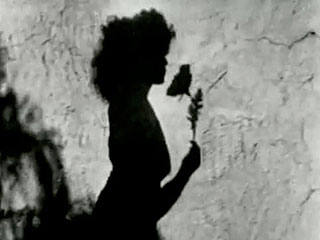 |
| |
Meshes of the Afternoon by Maya Deren (USA, 1943).
Are there Australian indie films that are this good? |
This, of course, is a purely subjective list.
This website aims to be objective as much as possible, giving recognition to the filmmakers who have worked away with difficulty and joy to create their works, but any such "Top 50 films" list will always be subjective, at least to a certain extent.
I welcome others out there to email in their own Top 10 Australian independent films lists, and I will publish them at the tail of this page. The critieria is that the films have to be made by a director who is "independent", not part of the mainstream.
For myself, I have viewed many Australian indie films over the years, from 1982, and some have struck me as masterpieces, or at least very great films.
Some filmmakers I admire have missed out on my list here, as they have a whole body of work that is interesting, with not the one film that stands out. People like the Cantrills (apart from the exception I list), Steven Ball, Marcus Bergner, Genevieve Bailey, Nick Ostrovskis, and others.
Films are in rough preferential order.
Bill Mousoulis, March 2014, and revised March 2020, the added titles marked "NEW".
| |
 |
| |
Fear of the Dark |
1. Turnaround (Michael Lee, 1983, 60 mins)
For me, this is Lee's ultimate and sublime film, post his acknowledged masterwork The Mystical Rose (see below). It brims with spirituality, Lee's personal redemption melding with the Australian psyche of the land. It's like an earthquake that is full of wonder and joy.
2. Fear of the Dark (Peter Tammer, 1985, 59 mins)
An extraordinary essay film about acting on the one hand (with playful jokes) and murder on the other (with disturbing details). An unusual and powerful collage of elements, one of the best Australian films ever.
3. Pure Shit (Bert Deling, 1975, 83 mins)
An Australian film classic, from a time (mid '70s) when even mainstream Australian cinema was not bad. A pure heroin ride, a freedom in its narrative and structure, they don't make 'em like this anymore.
| |
 |
| |
Sick to the Vitals |
4. Sick to the Vitals (Kim Miles, 2005, 20 mins)
Miles has a peculiar vision which can tend to overpresent itself, but this film is a masterpiece from top to bottom. The banal opening scene ushers in a nightmare that is extraordinarily executed, with black humour, metaphysical space travel, scungy manouevrings, and an ending full of magical redemption.
5. The Butler (Anna Kannava, 1997, 58 mins)
Kannava's ultimate film, nominally about her brother Nino, but in the end about herself too, and her condition (which took her life in 2011), this is a documentary full of surprises and delights.
6. NEW Waiting for Sevdah (Saidin Salkic, 2017, 40 mins)
Pure cinema from this Bosnian migrant making experimental self-portrait films. A combination of silent cinema, surrealist cinema and experimental cinema, creating existential agony and joy.
7. The Mystical Rose (Michael Lee, 1976, 65 mins)
Michael Lee's recognised masterpiece, his exorcism of catholicism in stunning virtuoso cinematic effects (animation, etc.), this still stands as a freak film in the history of Australian cinema. Has to be seen.
| |
 |
| |
Original Copy |
8. Original Copy (Mark Zenner, 1989, 23 mins)
The enfant terrible of Melbourne arts culture, the late great Mark Zenner left us with very few (completed) films. This Super 8 puzzle is a masterwork of alienation, suspicion, and terror.
9. Untitled (Rolando Caputo, 1986, approx. 7 mins)
Caputo, an academic, made some Super 8 films around the themes and style of post-modernism in the early '80s. This later film is a romance, a doomed moment, with music by John Cale, and it is brilliant.
10. NEW Hail (Amiel Courtin-Wilson, 2011, 104 mins)
A masterpiece of modernist Australian narrative feature work from one of Australia's most interesting auteurs. The first half is humanistic and realistic, the second half is a stylised horror film. Not for the faint-hearted!
11. Palm Beach (Albie Thoms, 1980, 88 mins)
One of the very few Australian films in existence truly labelled "experimental narrative feature". The film is composed of long sequence shots, of different characters. A delight to watch.
12. Brickwall (Paul Winkler, 1975, 22 mins)
An Australian masterpiece of experimental cinema, we see bricks, bricks and more bricks. Winkler has a rigour that is undeniable. People always walk out of his films. A good sign.
| |
 |
| |
Yes It Is |
13. NEW Samson and Delilah (Warwick Thornton, 2009, 101 mins)
Similar to Hail (above), a feature that is in two halves, one slow-paced and gentle, the other furious and dramatic. As an Aboriginal filmmaker, Thornton is not afraid to penetrate into the psyche of his people, and the social conditions that go awry for them.
14. Yes It Is (Virginia Hilyard, 1985, 4 mins)
A classic of the Sydney Super 8 scene of the '80s, this impressionistic piece used slowed down Beatles music, resulting in a hypnotic, strange, but still beautiful film.
15. The Spag (Giorgio Mangiamele, 1960, 37 mins)
The recent DVD "The Giorgio Mangiamele Collection" unveiled an alternate version of The Spag, earlier and shorter, which is surely Mangiamele's edgiest, toughest work. (it's quite different from the 1962 version)
16. Don't Blink (George Goularas, 1998, 18 mins)
An outrageous narrative film from this experimental filmmaker (see his other film, below), a surreal, absurd collection of skits and situations, like Bunuel on acid.
| |
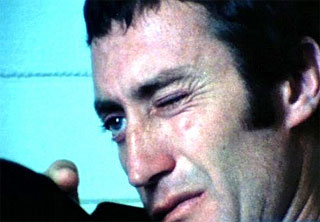 |
| |
The Love Letters from Teralba Road |
17. The Love Letters from Teralba Road (Stephen Wallace, 1977, 50 mins)
Wallace built up to his first feature (the grim Stir, 1980) with this beautiful tale of a couple apart, and attempting a re-union. Bryan Brown stars in his debut role. Poignant.
18. Two Homelands (Michael Karris, 1979, 30 mins)
Ostensibly a simple documentary film of a concert, this film explodes into a poignant, moving essay about the pscyhic displacement of Greeks who migrated to Australia.
19. In a Few Words (George Goularas, 1989, 9 mins)
Goularas is one of Australia's great unknown filmmakers. This early Super 8 film of his is cryptic, fractured, disorienting, and features the peerless voice of Mark Zenner.
20. Dance of Death (Dennis Tupicoff, 1983, 7 mins)
Tupicoff is one of Australia's premiere animators, and his work is highly sophisticated. This early work of his is devilishly funny and surreally dark.
21. Big Risk (Mark Zenner, 1978, 17 mins)
After Zenner died in 2008, this film was found in his belongings, and is a classic slice of Australian punk, both literally and figuratively, as razor sharp editing and collage techniques enliven the documentary on several punk bands.
| |
 |
| |
Return Home |
22. cine/angst/cinch (Jim Bridges, 1989, approx. 35 mins)
A personal collage/essay film of arresting structure and moments, enlivened by Loudon Wainwright III songs. Bridges' Super 8 film is an unseen classic.
23. Lucifer Gets Hammered (Daniel Kotsanis, 1996, 3 mins)
Kotsanis, the Super 8 rebel, played this film one night at a screening in "expanded" form, waving the projector around. A statement of anarchy from a talented filmmaker. But where is he now? Disappeared off the face of the planet!
24. Journey to the End of Night (Peter Tammer, 1982, 70 mins)
As if one dark masterpiece wasn't enough (see above), Tammer made a second dark masterpiece in the '80s, but this time in the form of a documentary about a WWII soldier in Japan. Difficult to watch at times, it's ... the truth.
25. Return Home (Ray Argall, 1990, 89 mins)
A magic narrative feature film for Australian cinema at the time, and eventually this film will be rediscovered and recognised. (How prescient were these words of mine from 2014, as 2019 saw a beautiful HD restoration released.) Argall's sensitive touch marks this as the best of various "naturalistic" type features Australia has produced (Mullet, The Year My Voice Broke, etc.)
| |
 |
| |
Carlton + Godard = Cinema |
26. Carlton + Godard = Cinema (Nigel Buesst, 2003, 145 mins)
What a document! Buesst resurrects a number of indie films from the '50s and '60s and gives them a Scorsese-like life, allowing big chunks of them to run alongside a commentary on them.
27. In This Life's Body (Corinne Cantrill, 1984, 147 mins)
A side-project for the Cantrills, away from their usual concerns, this is a documentary about Corinne's life utilising a whole bunch of photographs. It is a sweeping, touching, magnificent film.
28. Forgotten Loneliness (Chris Löfvén, 1965, 8 mins)
Löfvén was a teenage prodigy when he made this film, at 16, effortlessly following a young Asian boy around the streets, in a portrait of cultural isolation. A beautiful film.
29. NEW MELODRAMA/RANDOM/MELBOURNE! (Matthew Victor Pastor, 2018, 82 mins)
Pastor is an extraordinary talent currently, both prolific and eclectic. This film is like the Breathless of a possible New Wave of jazzy, wild, energetic cinema in Australia - but will it have this effect, or will Australian feature cinema continue to be average?
| |
 |
| |
Working Week |
30. Paper & Sand (Sotiris Dounoukos, 2006, 17 mins)
Dounoukos is a narrative filmmaker who explores cultural displacement, but not in any obvious way. This film features Iranians in Sydney, and is observed with tenderness.
31. Journey (Marie Craven, 1984, 7 mins)
A stunning debut from Craven at the time, this Super 8 film bowled everyone over with its lyricism and fleeting beauty, like an Australian Meshes of the Afternoon.
32. Working Week (Mark La Rosa, 1988, 34 mins)
From the era when Super 8 filmmaking in Melbourne was producing long narratives (including features), this is La Rosa's energetic study of teenage kids on the loose in the suburbs. A superb film.
33. Obsession (John Cumming, 1981-85, 24 mins)
Anna Kannava's voice booms out of this driving, kinetic essay film about cars and racing, Cumming's key work in a filmography full of experimental twists and turns.
34. Shut Down (Nicholas Nedelkopoulos, 2011, 9 mins)
Nedelkopoulos has undergone an explosion of creativity in recent years, manipulating different versions of his digital effects. Seeing a dozen or so of his films, this one struck me as very powerful and engaging.
| |
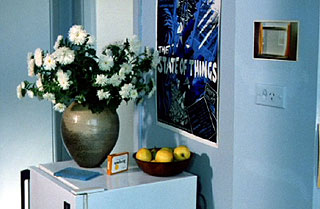 |
| |
My Life Without Steve |
35. Gerry Gee Jnr (Matthew Rees, 1983, 8 mins)
The ultimate expression of and antithesis to the Super 8 "doll" genre, Rees' classic short film flies wildly above every theory one could have about dolls and the animation of them. Another freak film.
36. Natura Morta (Ettore Siracusa, 1980, 14 mins)
Siracusa is a bold, Borgesian essay filmmaker, so this film is an anomaly - a quiet, naturalistic portrait of an old man in the suburbs. But it is a grand film - quiet but effective.
37. My Life Without Steve (Gillian Leahy, 1987, 53 mins)
Wonderful diary film by one of Sydney's stalwart filmmakers. This was a refreshing film in the face of the Sydney '80s post-modernist push, and it remains a great film today.
38. Words And Silk: The Imaginary and Real Worlds of Gerald Murnane (Philip Tyndall, 1989, 86 mins)
One of the great "essay" films in Australian film history, the worlds of horse-racing and writing meshing in unexpected ways. (Like with Return Home, above, restored and re-released in 2019.)
39. NEW Terror Nullius (Soda_Jerk, 2018, 55 mins)
Who would have thought that these radical samplers/mashers (two nice sisters with an anarchist bent) would have blitzed the entire world with this ambitious critique and (leftist revenge-fable) of Australian cinema and colonialism? Believe it!
| |
 |
| |
Road to Nhill |
40. Sweet Dreamers (Tom Cowan, 1982, 82 mins)
Not the film that Cowan is known for, I find this a touching and beautiful film about a couple and the whole business of filmmaking. A film of rough charm, but charm nonetheless.
41. Queensland (John Ruane, 1976, 52 mins)
Early film from the more mainstream director Ruane, this was made when he was 23 and is a bold, realist film about ordinary people and their dreams. Stars John Flaus.
42. Road to Nhill (Sue Brooks, 1997, 95 mins)
Brooks made some shorts before this, and decided with her first feature to make a whimsical comedy set in a country town. The film is simple but touching.
43. NEW Reflections in the Dust (Luke Sullivan, 2018, 75 mins)
This garish, experimental and extraordinary B&W narrative feature about male violence came out of the blue recently, and was even more remarkable in that it was the product of a 23-year-old smiley and friendly young man. Bela Tarr or '60s Czech cinema anyone? Again, like with Terror Nullius above, believe it!
| |
 |
| |
Eden |
44. For a Better Life (Nicolina Caia, 1990, approx. 12 mins)
Caia is a lost filmmaker, a VCA student who didn't go on to any film career (she went into interior design). A great short film about the Italian-Australian experience.
45. Paper Chains (Richard Tuohy & Mark La Rosa, 1992, 33 mins)
The zenith of Tuohy and La Rosa's "anti" narrative films, where there are characters and scenes, but the action and meaning is almost non-existent. Has a stunning closing moment.
46. Em 4 Jay (Alkinos Tsilimidos, 2006, 87 mins)
Tsilimidos, for a change, goes all naturalist, with this downbeat and formally rigorous study of a couple of heroin addicts. A simple but brave film.
47. Eden (James Howard, 2012, 28 mins)
Howard is an amateur filmmaker, with a wicked sense of humour. This film is set in the Garden of Eden, or perhaps Bunnings Garden Centre, it's the same thing! Surreal, bizarre, hilarious, Eden needs to be acknowledged.
| |
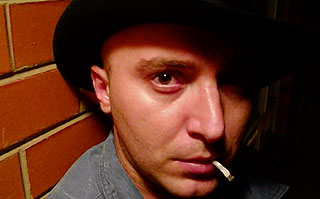 |
| |
Konvent |
48. (The) Taking (of) Place (Daniel Staten-Robinson, 1984, 15 mins)
Sydney Super 8 film of the '80s that was riffing off Duras' India Song, but still providing its own pleasures. Sadly, the filmmaker didn't go on to have any film career.
49. Stan and George's New Life (Brian McKenzie, 1992, 104 mins)
McKenzie's forte, of course, is documentary, and he is Australia's prime documentarist. This is a fiction feature and a unique portrait of two "ordinary people". Simple and heart-rending.
50. Konvent (Saidin Salkic, 2010, 54 mins)
So what's a newly-arrived Bosnian refugee doing in Australia? Making a film, of course, about being stuck in a suburban house. This is a minimalist experimental tour-de-force.
HONOURABLE MENTIONS:
Brittle Weather Journey (Stephen Wallace, 1973, short)
An early short film from a director who is more associated with mainstream feature filmmaking. This is a stirring short film, pristine B&W images (shot by Tom Cowan) of nature abounding.
| |
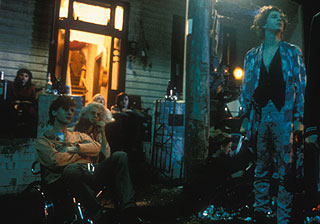 |
| |
Dogs in Space |
A Sketch of Abigayl's Belly (David Perry, 1968, 2 mins)
The UBU short films in the late '60s were cheeky, funny, irreverent, anarchic, joyful. This film was almost censored, but it is playful and beautiful.
Legion (Mark Titmarsh, 1985, 16 mins)
This was an awaited film from Titmarsh at the time, his No Frills Fund project, and it extended his Super 8 Metaphysical TV style in grand and unexpected ways.
The Boys (Rowan Woods, 1998, 86 mins)
When Woods made this film, David Wenham was not known, and this style of film was not known. Since then, the two are overdone, but this remains a fine narrative feature.
The Refracting Glasses (David Perry, 1992, 109 mins)
From the time in Australan screen history where these type of essay films (feature length) were being funded by the AFC. This one sees the UBU filmmaker in full "essay" / collage mode.
Dogs in Space (Richard Lowenstein, 1986, 108 mins)
Michael Hutchence is actually okay in this role, and the film was shot only a few years after the time it details - it is an enjoyable portrait of a certain time in Melbourne, of the innercity punk scene.
©
Bill Mousoulis, March 2014 and revised March 2020.
Back
to Melbourne independent filmmakers index page
|